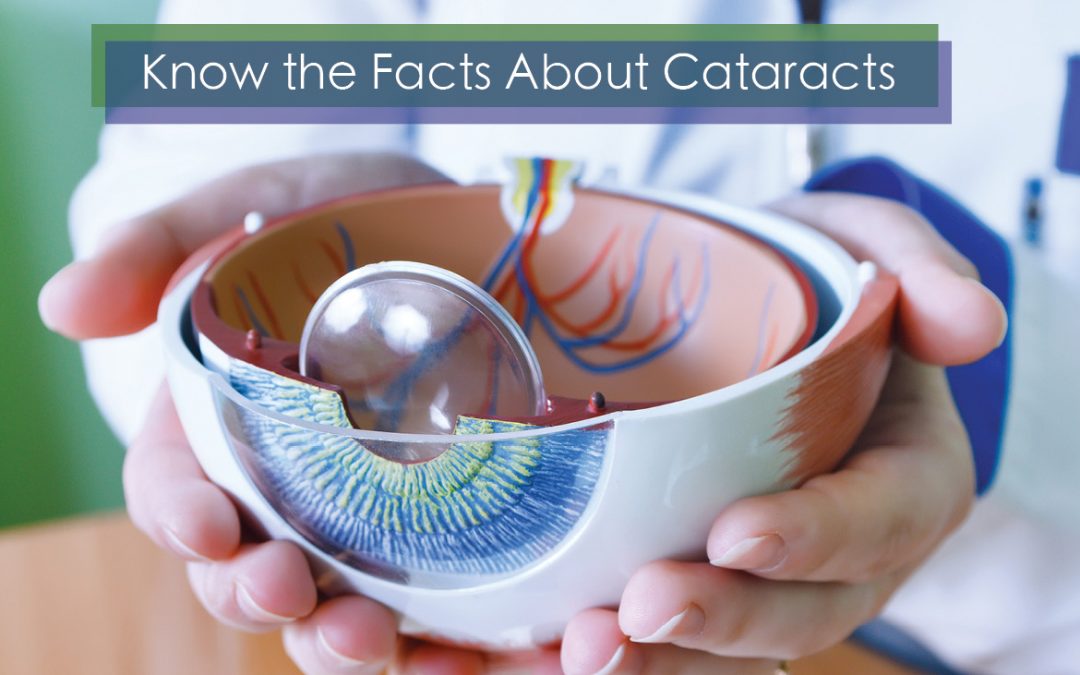Did you know, cataracts are the leading cause of blindness in the world? Cataracts affect nearly 20.5 million Americans age 40 and older.* If you are over the age of 50, you should have a yearly comprehensive eye exam to detect cataracts as they develop.
A cataract is the clouding of the lens in your eye. Many people describe the feeling as if you are looking through a foggy or frosted window.
What causes cataracts?
Clouding of the natural lens in your eye is caused by proteins clumping together within the lens. It is unknown why the eye changes as the body ages, but these changes may cause cataracts to grow larger over time, resulting in an increased difficulty to see clearly.
Some factors that have been linked to cataract development are diabetes, obesity, smoking, ultraviolet radiation, and family history.
Symptoms
Symptoms associated with cataracts can vary from person to person. However, there are a few key symptoms associated with most cases of cataract development. If you are experiencing one or more of these symptoms, schedule a visit with your eye doctor to discuss your risk or development of cataracts.
- Slight blur in vision
- Vision is cloudy
- Sunlight or lamps feel too bright
- Headlights have more glare and/or a halo around them
- Colors no longer appear as bright as they once did
Types of cataracts
Subcapsular
Subcapsular cataracts typically occur in the back of the lens and are most common in individuals with diabetes or those taking a high dose of steroid medication.
Nuclear
Nuclear cataracts are associated with aging and occur in the central zone of the lens.
Cortical
Cortical cataracts occur in the lens cortex and are associated with streaks which interfere with light passage through the eye.
Congenital
Congenital cataracts are present at birth and may be due to genetics or intrauterine infection.
Are cataracts preventable?
No studies have shown a way to prevent cataracts, however, there are recommended practices to help maintain eye health and lower your risk of developing cataracts.
- Yearly comprehensive eye exams help maintain eye health and detect the development of cataracts at an early stage.
- Smoking has been linked to the development of cataracts. Quitting smoking provides a variety of health benefits lowering your risk for further cataract development.
- Keeping up with treatment if you have diabetes or other medical conditions will help minimize your risk.
- Maintaining a healthy diet, including fruits and vegetables, provides increased overall eye health.
- Wearing sunglasses to prevent ultraviolet radiation will decrease your risk of UV damage which has been linked to the development of cataracts.
*National Eye Institute (https://nei.nih.gov)
